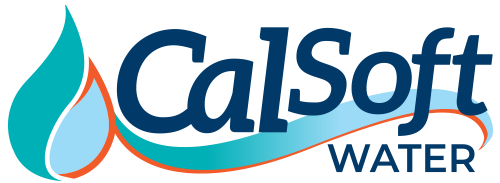Hardness and TDS are both terms we use to talk about water quality, but what’s the difference between the two? The difference between hardness and TDS in water comes down to a matter of taste and safety. The minerals in hard water may result in an unpleasant taste, but high levels of TDS mean the water is not even safe to drink!
What is TDS in water?
TDS refers to total dissolved solids and is used to measure the amount of dissolved impurities in a liquid– in our case, water. These impurities can include minerals, organic matter, and toxic chemicals.
As water makes its way to the water treatment plant, it picks up salt and sediment from the ground. Municipal water treatment filters out the organic matter that hasn’t yet dissolved, in addition to some that are soluble. The resulting water is then delivered to the tap in your home. While the final product is exponentially cleaner and safer drinking water, tap water still contains some minerals and contaminants.
How much TDS is safe for drinking water?
The amount of total dissolved solids in water is measured in parts per million (PPM) and milligrams per liter (mg/L). A higher level of TDS indicates the presence of more minerals, metals, and other solids dissolved in the water.
The World Health Organization (WHO) says that clean drinking water has a TDS level of less than 300 PPM. In the United States, the average level of TDS is 350 PPM for tap water. Any water with a TDS level of 900 or more is considered contaminated and not suitable for drinking water.
What does water hardness mean?
Water hardness, on the other hand, is a little more specific. Hardness refers to the amount of minerals within the water. Hard water is characterized by high levels of dissolved minerals like calcium and magnesium. The presence of these minerals in water makes it less effective for washing, cleaning, and even plumbing.
Is hard water safe to drink?
Water containing high levels of calcium and magnesium may be safe to drink, but the mineral content may affect the taste, smell, and texture. Even though drinking hard water doesn’t pose a risk to your health, it can be harsh on plumbing and other household appliances, and mineral deposits can build up on your skin and hair.
The difference between measuring water quality according to hardness or TDS
While TDS is a great way to measure all dissolved solids, water hardness refers more specifically to the calcium and magnesium content of the water. Hard water is safe to drink. Conversely, high levels of TDS indicate that the water is NOT clean enough to drink.
How to improve your water quality and get the best-tasting drinking water at home
Hard water is generally safe to drink, but the calcium and magnesium ions can result in limescale buildup in your home, soap scum on your clothes, and a bitter taste in your mouth. How can you fix this? The best way to turn hard water into soft water is with a water softener.
With a water softener, the water travels through a filter that traps calcium and magnesium ions. These ions are exchanged for sodium ions and stay in the tank to be flushed out as brine later. Since the sodium ions balance out the charge of the calcium and magnesium ions, the newly softened water flows right into your tap.
Water with high TDS levels can be addressed with the right drinking water system or water filter. A reverse osmosis water filtration system guarantees safe, clean drinking water by removing up to 99% of contaminants. The ultra-thin semi-permeable membrane is the preferred method since it not only filters out insoluble contaminants, but the dissolved impurities as well.
Find a drinking water system that fits your needs with CalSoft Water
Hardness and TDS are both ways to measure impurities in water. But while hardness measures calcium and magnesium content, TDS addresses the safety qualities of the water. A water softener helps address hardness by removing minerals from tap water. A drinking water system that uses reverse osmosis filtration guarantees safe drinking water by reducing the amount of total dissolved solids in the water, which can include both organic and inorganic contaminants.
With the recent water contaminations, it’s about time to find a drinking water system for your Santa Maria home or business. CalSoft Water offers an environmentally friendly Water Softener Exchange Tank service, along with reverse osmosis filtration systems, water softeners, and water conditioners to meet your water needs. Contact us today!

